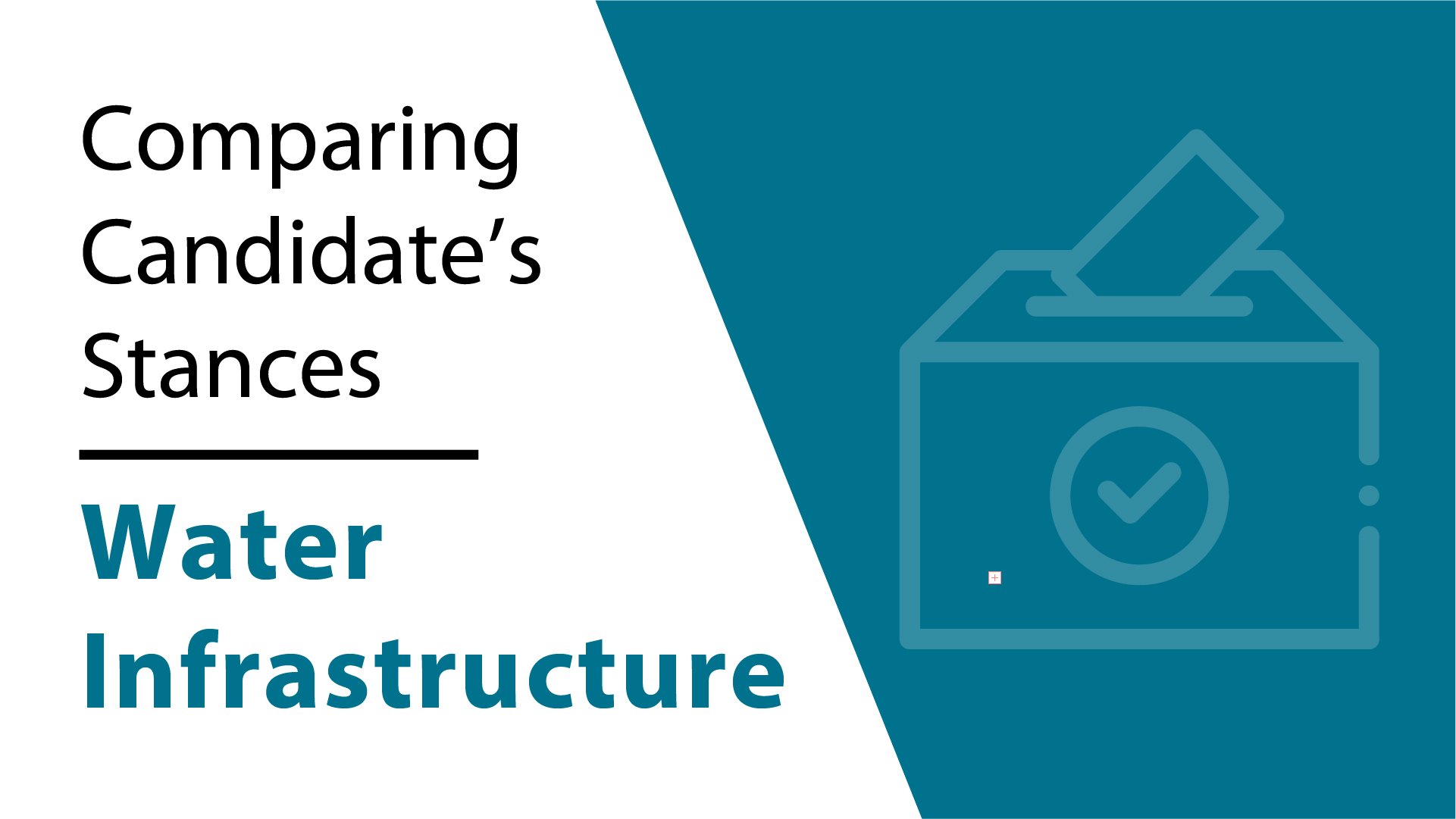This website uses cookies so that we can provide you with the best user experience possible. Cookie information is stored in your browser and performs functions such as recognising you when you return to our website and helping our team to understand which sections of the website you find most interesting and useful.
News
Election 2020 Issues Comparison: Water Infrastructure
With just under nine weeks left before the 2020 elections, we examined where President Donald Trump and former Vice President Joe Biden stand on some of the most critical issues to the vinyl industry. This week we will explore the candidates’ positions on water infrastructure. Rebuilding the country’s aging water infrastructure and increasing jobs is a priority for President Trump and Joe Biden, but there are significant differences in their plan’s best practices for building and funding such infrastructure.
President Trump’s infrastructure plans rely on deregulation and state and local partnerships.
President Trump has rolled back several regulations on waterways and clean water rules which he considered onerous to industry. In January 2020, the Administration rescinded the Obama-era water rule, which reduces the amount of U.S. waterways that get federal protection under the Clean Water Act. The effort provided economic relief to the agriculture, home building, mining, and oil and gas industries among others. These businesses have had fought to return the law’s scope requiring them to obtain permits to where it had been prior to the Obama administration..
In October 2019, the Administration proposed new regulations on lead and copper in drinking water but reduced the timeframe to replace the 6 million lead pipes that connect homes to main water pipes. Instead of replacing 7 percent of its lead service lines that exceed lead levels more than 15 parts per billion, it will replace 3 percent each year.
In February 2018, the President proposed $1.5 trillion in infrastructure funding through public partnerships, with the federal government investing $200 billion of the funding. Over half of that would be invested in a wide range of infrastructure incentive programs rather than traditional funding programs. While some of the funding would go to water infrastructure, federal funds would only account for 20 percent of the projects when traditionally it would fund 75 to 83 percent of water infrastructure programs; the rest would have had to be provided by state and local governments and the private sector. The proposal did not advance due to a lack of Democratic and Republican support for the proposal’s funding. Infrastructure has remained high on the President’s agenda with the White House announcing several intentions to start negotiations, but the President has yet to introduce a plan formally and has been unable to strike a deal with Democratic lawmakers.
Biden’s “Build Back Better” plan invests in green infrastructures and taxing the wealthy.
Joe Biden has called climate change “the greatest threat to our national security” and considers building resilient infrastructure a vital investment in America’s future, as well as an economic stimulus. As part of his campaign promises, Joe Biden unveiled his “Build Back Better” plan to spend $2 trillion over four years to significantly escalate the use of clean energy and environmental justice while creating economic opportunities and strengthening infrastructure. Biden’s plan shares many of the policy goals of the Green New Deal and would put the US on an irreversible path to net-zero carbon emissions by 2050.
During his acceptance speech at the Democratic National Convention, Biden pledged to build back the economy through infrastructure and “with pipes that transport clean water to every community.” Biden’s plan includes reinvesting in American manufacturing, creating 5 million new manufacturing and technology jobs, while establishing stricter “Buy American” rules. He pledges that all aging infrastructure will be upgraded with resilient technology and fight regional water challenges from pollution and climate change. Biden would pay for these investments by rolling back President Trump’s tax plan, which he says benefits the wealthiest 1 percent.
Biden has said his vice-presidential nominee will play a more influential governing role in his administration and Kamala Harris’s positions on these issues will likely have an impact. Harris has a strong environmental justice record in both the Senate and as California’s attorney general. She introduced the “Water Justice Act” which includes declaring a drinking water infrastructure emergency and directing $50 billion toward contaminated communities and schools to test and remediate or replace toxic drinking water infrastructure. The bill also increases mandatory spending for sustainable water infrastructure programs.
By the way, visit the Vinyl Institute Voter Information Center, a nonpartisan resource that has information to help you prepare for the General Election.


